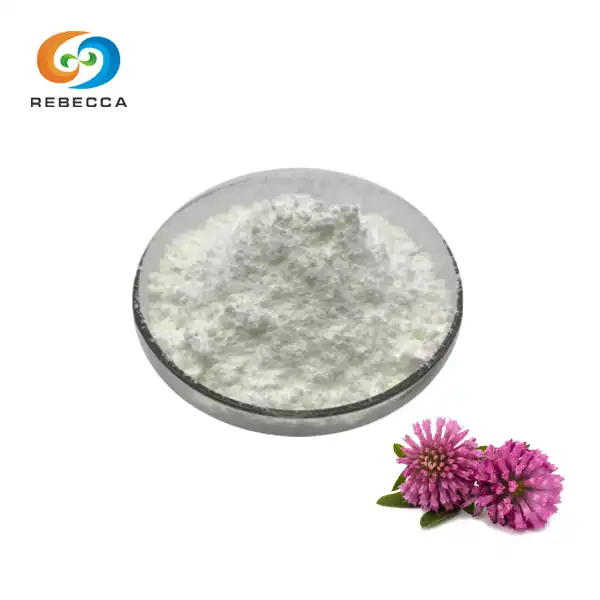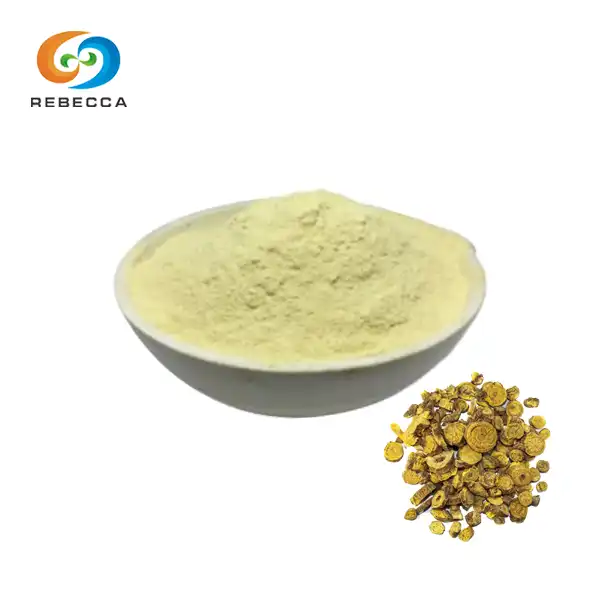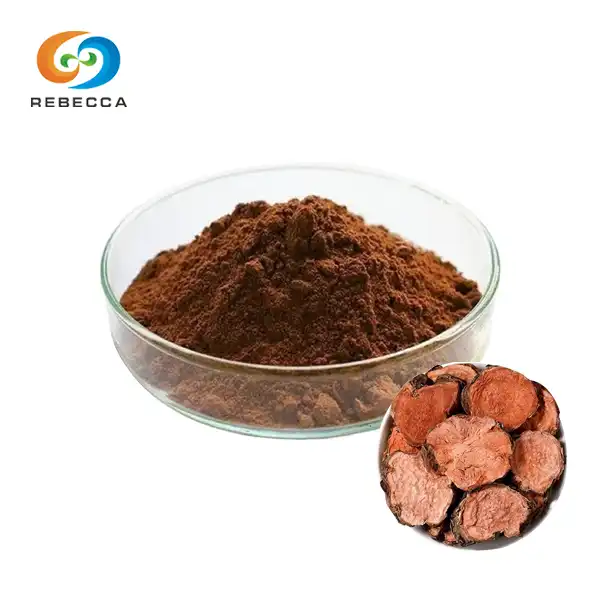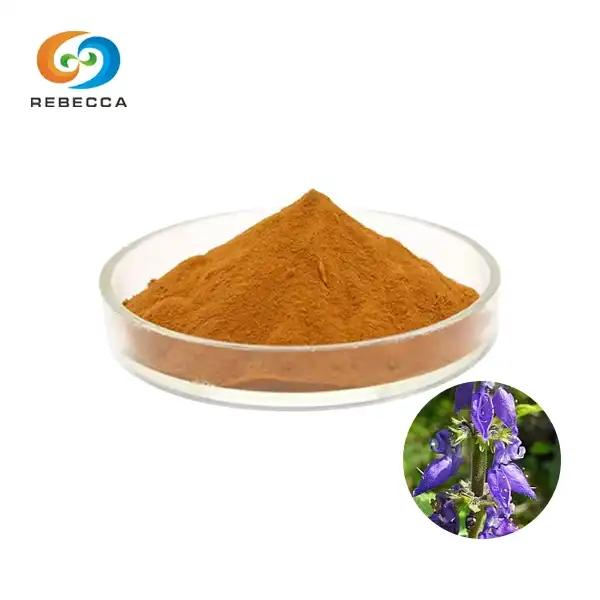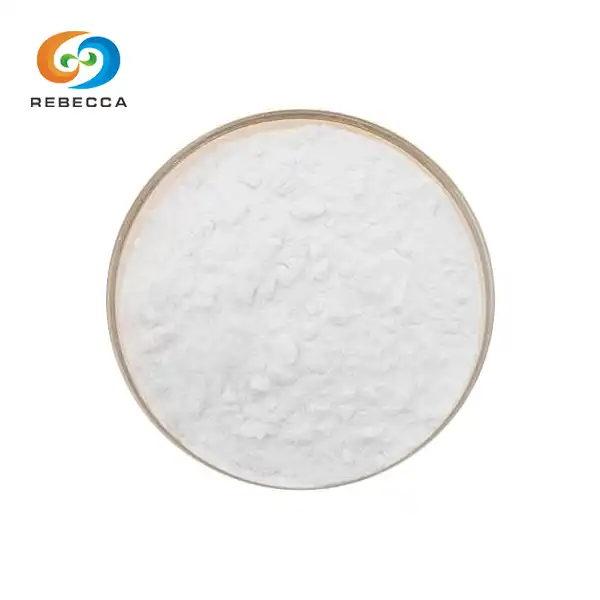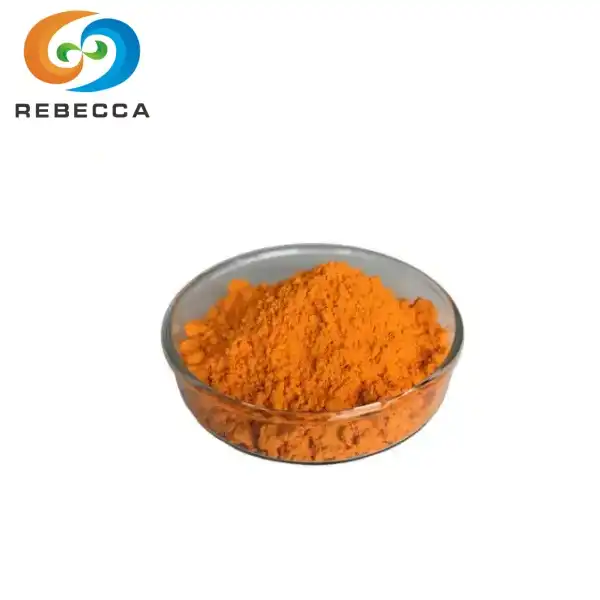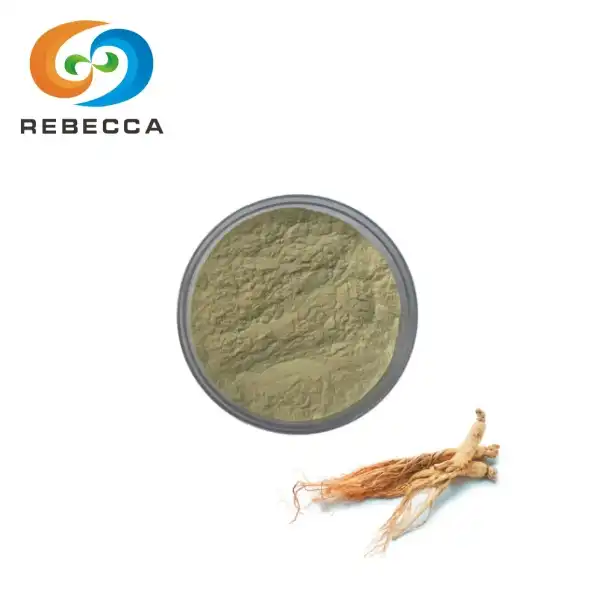Alpha Lipoic Acid Powder For Skin
Antioxidant Properties
Alpha lipoic acid powder (ALA) is a powerful antioxidant that offers numerous benefits for skin health and appearance. As a naturalcompound in the body, ALA plays a pivotal part in vitality generation and cellular function. When applied topically or taken as a supplement, it can help protect and repair skin from free radical damage.
Free radicals are unstable molecules that can cause oxidative stress, leading to premature aging and skin damage. Environmental factors like UV radiation, pollution, and stress can increase free radical production in the skin.
What makes alpha lipoic acid unique among antioxidants is its amphiphilic nature - it is both water and fat-soluble. This allows it to penetrate all parts of skin cells to provide comprehensive protection. it can also help regenerate other important antioxidants like vitamins C and E, further enhancing its protective effects.
By combating oxidative stress, ALA may help slow visible signs of aging like fine lines, wrinkles, and loss of elasticity. Regular use of ALA in skincare products or supplements could potentially lead to a more youthful, radiant complexion over time. However, it's vital to note that whereas promising, more investigate is still required to completely get the long-term anti-aging impacts of alpha lipoic acid on human skin.
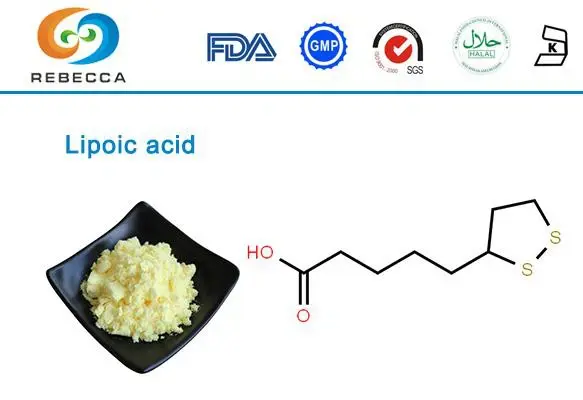
Improve Skin Tone And Texture
In addition to its antioxidant properties, alpha lipoic acid powder has shown potential for improving overall skin tone and texture. ALA may help firm and tighten the skin, reducing the appearance of fine lines and wrinkles for a smoother, more youthful look.
One way ALA achieves this is by promoting collagen production. Collagen is a key structural protein that gives skin its firmness and elasticity. As we age, collagen production naturally declines, leading to sagging and wrinkles. it has been appeared to invigorate collagen union in skin cells, which seem offer assistance keep up skin's energetic structure and appearance.
Alpha lipoic acid may too offer assistance indeed out skin tone by diminishing irritation and hyperpigmentation. Its anti-inflammatory properties can calm redness and irritation, promoting a more balanced complexion. Some studies suggest ALA may inhibit tyrosinase, an enzyme involved in melanin production, potentially helping to fade dark spots and create a more uniform skin tone.
Furthermore, its ability to boost cellular energy production may contribute to a healthy, vibrant glow. By enhancing mitochondrial function in skin cells, ALA could improve overall skin metabolism and renewal processes. This may result in brighter, more radiant-looking skin.
While individual results can vary, many users report noticing improvements in skin firmness, clarity, and overall texture with regular use of ALA-containing products. As with any skincare ingredient, consistency is key to seeing potential benefits. It's also important to use ALA products as directed and in conjunction with a comprehensive skincare routine, including sun protection.

Shrink Pores
While alpha lipoic acid powder cannot physically shrink pores, as pore size is largely determined by genetics and age, it can help minimize their appearance through several mechanisms. This creates the illusion of smaller, less noticeable pores for a smoother-looking complexion.
One way ALA helps is by promoting skin cell turnover and exfoliation. This process helps remove dead skin cells and excess oil that can accumulate in and around pores, making them appear larger. By keeping pores clear of debris, alpha lipoic acid can help them appear less prominent.
Its antioxidant properties also play a role in pore appearance. Free radical damage can break down collagen and elastin around pores, causing them to lose structure and appear larger. By protecting against this damage, alpha lipoic acid may help maintain the firmness of the skin around pores, keeping them looking tighter and less visible.
Additionally, its potential to regulate sebum production could benefit those with oily or combination skin types. Excess oil can settle in pores, stretching them out and making them more noticeable. By helping to balance oil production, ALA may contribute to less congested, less visible pores.
It's important to have realistic expectations when it comes to pore size. While alpha lipoic acid and other skincare ingredients can help improve the appearance of pores, they cannot permanently alter their physical size. Consistent use of ALA, along with proper cleansing and oil control measures, can help keep pores looking their best.

Exfoliation
Alpha lipoic acid powder offers gentle yet effective exfoliating properties, making it a valuable ingredient for improving skin texture and promoting a brighter, smoother complexion. Unlike harsh physical scrubs or strong chemical exfoliants, it provides a more subtle approach to removing dead skin cells and promoting cell turnover.
ALA works as a chemical exfoliant, helping to break down the bonds between dead skin cells on the surface of the skin. This process allows these cells to be more easily shed, revealing the fresher, healthier skin beneath. Regular exfoliation with alpha lipoic acid can help address issues like dullness, rough texture, and minor skin congestion.
In addition to its exfoliating effects, its antioxidant properties can help protect newly revealed skin cells from environmental damage. This dual action of exfoliation and protection can contribute to an overall improvement in skin health and appearance.

Rebecca Alpha Lipoic Acid Bulk Powder
For those interested in incorporating alpha lipoic acid powder into their skincare routines or product formulations, Rebecca Bio-Tech offers high-quality ALA bulk powder. With a production capability of 500 tons per year, Rebecca Bio-Tech has the capacity to meet a wide range of requirements, from small-batch skincare creators to large-scale manufacturers.
Rebecca Bio-Tech's α-Lipoic Acid powder is produced under strict quality control measures to ensure purity and efficacy. This allows skincare formulators and manufacturers to confidently incorporate ALA into their products, knowing they are using a reliable, high-grade ingredient.
Its stability in different formulations allows for creative and effective product development to address various skin concerns.

When considering the use of ALA powder in skincare formulations, it's important to work with experienced professionals who understand proper dosage and formulation techniques. While ALA is generally well-tolerated, improper use or concentration could potentially lead to skin irritation.
For further information about Rebecca Bio-Tech's Alpha Lipoic Acid bulk powder, including specifications, pricing, and ordering details, interested parties can contact the company directly at information@sxrebecca.com.
As with any skincare ingredient, it's crucial to conduct thorough research and testing before incorporating ALA into new product formulations. This ensures both safety and efficacy for end-users, helping to create high-quality skincare solutions that can truly benefit skin health and appearance.
References
1. Biewenga GP, Haenen GR, Bast A. The pharmacology of the antioxidant lipoic acid. Gen Pharmacol. 1997;29(3):315-331.
2. Padayatty SJ, Katz A, Wang Y, et al. Vitamin C as an antioxidant: evaluation of its role in disease prevention. J Am Coll Nutr. 2003;22(1):18-35.
3. Packer L, Witt EH, Tritschler HJ. alpha-Lipoic acid as a biological antioxidant. Free Radic Biol Med. 1995;19(2):227-250.
4. Sherif S, Bendas ER, Badawy S. The clinical efficacy of cosmeceutical application of liquid crystalline nanostructured dispersions of alpha lipoic acid as anti-wrinkle. Eur J Pharm Biopharm. 2014;86(2):251-259.
5. Tsuji-Naito K, Hatani T, Okada T, Tehara T. Modulating effects of a novel skin-lightening agent, alpha-lipoic acid derivative, on melanin production by the formation of DOPA conjugate products. Bioorg Med Chem. 2007;15(5):1967-1975.
6. Moini H, Packer L, Saris NE. Antioxidant and prooxidant activities of alpha-lipoic acid and dihydrolipoic acid. Toxicol Appl Pharmacol. 2002;182(1):84-90.
